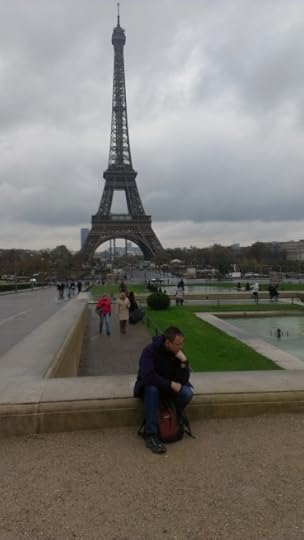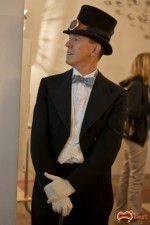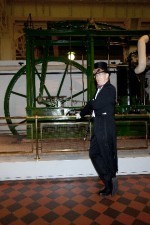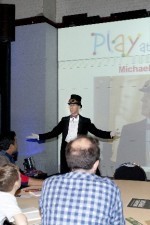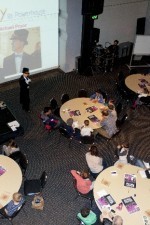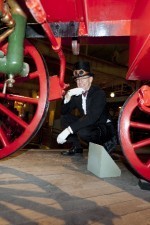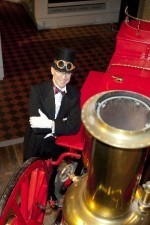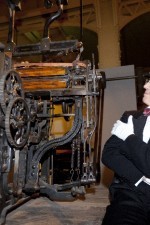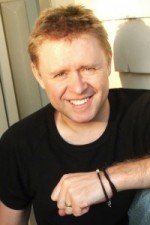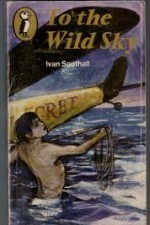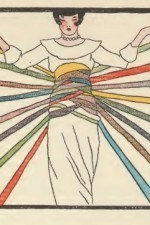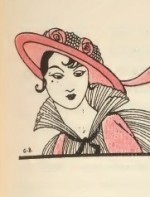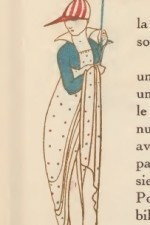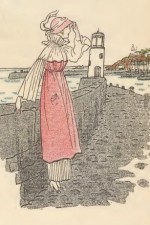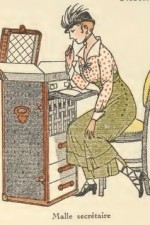Michael Pryor's Blog, page 18
December 14, 2012
Paris 3
December 9, 2012
Paris 2
I’ve been back from Paris for a week now. The jet lag is wearing off and I’m starting to get on top of the email backlog. The whole month long Gallic experience is settling down in my mind, too, enough for me to write a little about it.
Paris. What an extraordinary city. We had a lovely little apartment in the Marais, near the Pompidou Centre. It meant that thousands of Parisian attractions were within walking distance, so walk we did. We also used the mighty Metro extensively, travelling to the far reaches of the system to see what we wanted to see.
Paris is the essence of what I love about these grand European cities. It’s redolent with combine history and culture, but it knows how to have a good time as well. In the middle of the city, there’s always a gallery or museum within walking distance, and on the way you’ll pass a dozen excellent eateries.
And everything is done with such style. From the pedestrian you pass who is wearing his scarf just so and thereby making himself the definition of chic to the little Christmas lights at Place Vendome that were managed to be almost anti-crass in their elegance, Paris has an abundance of élan.
Some of our best Paris experiences:
The Musee D’Orsay. So good we went twice. Not just the staggering masterpieces (‘Oh look, there’s another gobsmacking Van Gogh, next to that jaw-dropping Cezanne, which is to the right of that swoon-making Manet’) but the building itself. Light, airy, full of grace. What a renovation rescue.
Fontainebleau. You can keep your Versailles.
This is how you do a royal French palace.
Le Train Bleu. Our Big Night Out. A stunning, over the top restaurant distilling La Belle Époque, tucked away into the Gare Lyon. Magnificent!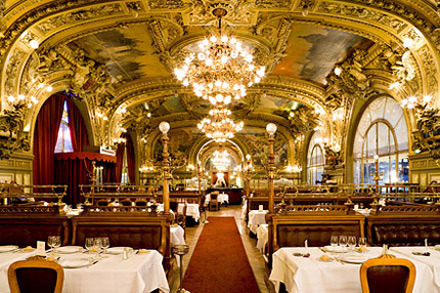
The Sewer Tour. A walk through a working section of the Paris waste disposal network. An engineering marvel below the elegant streets.
Photos are still to come. I had a disaster in the last week of our time there when the laptop melted down. No warning, and I’d been diligently transferring all the photos from my camera to what I thought was a safer place. I have someone looking at retrieving them. Fingers crossed.
I’ll post more Paris highlights over the next few weeks as I read over my travel diary and relive the fun.
December 4, 2012
Paris 1
I’ve just returned from a wonderful month in Paris. Yes, I’m a lucky man.
We had a superb flat near the Pompidou Centre and spent the entire time walking about, looking at things, eating and drinking. Cheese!
I’m working up a comprehensive report, for those interested, but in addition I’m going to post a number of impressions, memories, sights and experiences in no particular order.
First is one of the coolest things I saw during my month-long Paris sojourn: a real-life spy camera in a hat from 1910. It was in the sensational Musée des Arts et Métiers (Museum of Arts and Crafts).

October 16, 2012
Being Edited
After reading Keith Stevenson’s thoughtful piece on the importance of editing, I began thinking about this process from the point of view of a writer. That is, I wanted to share some thoughts with you not on the subject of editing, but on the subject of being edited.
This is timely for me as I’m in the middle of editing what will be my thirty-second book. There are certain things – like stubbing your toe – that don’t get easier with practice. Being edited is one of those things, but at least with editing there is the promise of something bright and good at the end. Not like stubbing your toe.
Before I start, though, there is one thing I have learned from going through this process thirty-one and a half times. It’s something that I think every writer needs to have tattooed on his/her forehead, backwards so it can be read the mirror: SOMETIMES, YOU ARE NOT THE BEST JUDGE OF YOUR OWN WORK.
Realising this is a vital, epiphanic moment for all writers. The sooner it comes to you, the better. No matter how much you know your work (and it should be pretty well, really), no matter how well you know your characters, your theme, your settings and the vast transformative arc of gobsmacking awesomeness that is your book, sometimes, in fact, you are the worst person to judge it.
For a start, as the writer, you cannot be the reader. The very things that made you the writer – the knowledge of everything that went into the book and everything that didn’t – means you cannot be the fresh, wide-eyed reader who has simply picked this book up because of (ahem) the wonderfulness of your previous work. Or because the cover had a picture of a cat on it. If you strain really hard you can perhaps be aware of a potential reader’s expectations or even their experience in reading your work, but you cannot really put yourself in their shoes. It takes someone else to do that. It takes an editor.
There is also the numbing effect of familiarity. You, after all, have been working on this book for some time. It has – I hope – gone through a number of versions as you’ve revised and improved, taking your first draft and polishing it until it gleamed. The downside of this experience is similar to repeating a word over and over and over until it not only loses all meaning but you begin to doubt its spelling and your sanity. Repetition does strange things to the human brain. Just ask any Las Vegas act where after 10,000 consecutive shows, the front man isn’t sure if he’s saying ‘Hey, anyone here from out of town?’ or ‘I condemn you all to a life of damnation, blood and hellfire! Release the demons!’
A fresh set of eyes. If an editor brings nothing else to the process but this, he/she would be worth their weight in gold. A little bit of distance from the work is a magical thing. After all, writers achieve a closeness to their work that can only be measured in units usually reserved for sub-nuclear particles. Femtometres, stuff like that. In the end, though, you can’t sit with each and every one of our readers, waiting for a tell-tale brow furrowing and then jumping in and saying: ‘Don’t worry about that. It’ll all become clearer in the next chapter.’ Your work has to stand on its own two feet, without you there to provide background notes while the reader reads.
Understanding all the above should help a writer come to terms with the confronting, bracing, revealing process of being edited, but it’s only a start. How do you approach that moment of truth, the time when the first editorial report lands in your lap?
The first step is to read the report carefully – and don’t respond to it straight away. Almost inevitably, the report will be a moment of great ego-testing. The work you spent so much time and effort on, so much sweat and emotion, so much of your brain and heart and spirit has been judged and it’s not perfect! You thought – or hoped – it was and someone is disagreeing!
It’s time for some deep breaths. Deep, deep breaths, perhaps until those little black dots in your vision announce that you’re overdoing it. Whatever you do, don’t immediately pick up the phone or launch into an email response, especially anything beginning with the words: ‘How dare you …!’ Go for a walk. Sleep on it. Let things lie fallow for a time.
After this pause for reflection, re-read the report – with a pencil or highlighter this time. Make note of all those points that, deep in your heart, you knew were issues. Things like that particular plot point you fudged and hoped no-one would notice. Or that beautifully written, but slow, chapter you thought you could get away with. Or that trenchant political point you thought you’d disguised well enough. Writers, here’s a heads-up: editors notice! They’re really, really, good at noticing. They’re professional noticers. They’re so eagle-eyed that eagles have a phrase to describe sharp sight: editor-eyed. And, yes, you saw that one coming.
So on this calmer, more considered re-reading of your editorial report you’ll see a whole bunch of stuff that you really knew anyway. No, you haven’t been found out. All that’s happened is that you now have a second opinion. A very good second opinion that you need to take seriously.
In a way, these points – the ones you suspected anyway – are easy enough to take on board. It gets harder after you accept these and work through the rest of the report.
This is where you come to where the editor has identified weaknesses that you didn’t suspect. Many of these will make you wince, or cry ‘ouch!’ or do both – but that’s okay. If you react like this, you’re probably agreeing with what the editor has pointed out, especially if you slap your forehead and mumble something about ‘What was I thinking?’
After that, though, there are more parts of your book that ‘may need attention’. These range through the whole gamut of ways that a book can go wrong. Pacing issues. Character motivation and inconsistencies. Failures of logic or plausibility. Inadequate backgrounding. Too much explanation. Not enough explanation. Internal contradictions. Errors of fact. Authorial intrusions. And I really wish I hadn’t started this list because it’s endless and if I stop now I’ll privilege (ahem!) the preceding weaknesses over the ones I haven’t mentioned and I don’t want to do that so instead – look over there! A bear!
After you’ve sorted out these challenging issues, you’re probably left with a handful where you really don’t agree with the editor’s view. And I mean, REALLY don’t agree. When you first read the report you probably disagreed with most of the points therein, but once your wise author-sense kicks in (that’s like ‘spider sense’ but you don’t have to get bitten by anything to achieve it) you generally end up seeing the editorial wisdom in identifying these issues. At the end of this journey of self-discovery, however, there are likely to be a few points that you simply feel are wrong, or misread, or off the beam. This is where you have to trust yourself and to know what you’re trying to achieve with your work – and here’s where I’ll contradict myself without a blush: sometimes you are the best judge of your own work. The tricky part is knowing when you are and when you aren’t.
Right. Once you’ve read and understood the catalogue of issues in the report, it’s teeth-gritting, loin-girding and soul-searching time because you need to change your story. You’ll be looking for fixes. Quick fixes (yay!) and more complex, time-consuming and headache-making fixes (boo!). You’ll be doing some large-scale work, ripping out walls and knocking over fences and you’ll also be doing some very delicate scalpel work. Much the same as when you wrote your first draft, really. You’ll have brainwaves that will have been prompted by something the editor noticed and when you follow this through you won’t have just propped up a saggy bit of the narrative, you’ll have introduced a whole, new, fascinating character arc. You’ll have to make hard decisions about that secondary/tertiary character you loved writing because of her sassy comebacks and curious choice of hair colour and you’ll end up deleting her because the book worked better without her. You’ll sweat over how to bring those two characters together because the book was unbelievable without such a meeting. You’ll gnaw a knuckle trying to figure out the best way to make that bank teller – the one whose fate will affect the whole town – a bit more appealing than the cardboard character you hoped was an everyman type.
My particular worry here is similar to what computer programmers face. When fixing one error, it’s easy to introduce another … Making a change in Chapter 3 to remedy that shonky character backstory infodump can have a ripple effect, necessitating that you track down the consequent issues it causes, and to fix all of them, too. Sometimes, a fix that appears quick can have the sort of knock-ons that make you sit bolt upright in the middle of the night and scream out: ‘But he can’t do that! He’s her nephew!’
It’s painstaking stuff and it can make you rethink everything about the book you began writing so long ago, but this is the craft. Step by step, working hard, to improve something you created.
Is this easy? No! Is it worthwhile? You bet. Naturally enough, it’s made simpler if your editor is on your wavelength before the process starts. It also helps if the process becomes a dialogue, a discussion with give and take, a free expression of views. Sometimes copious amounts of wine are involved, sometimes not.
Having gone through the process as many times as I have, I know that when you reach the other side of it, once the editing, revising, reworking and rewriting is finished you will have a better story in your hands. And, after all, isn’t that what it’s all about?
Remember: a good editor makes you a better writer.
September 28, 2012
Steampunk Regalia
September 25, 2012
GREAT SF AND FANTASY CLICHÉS
If you ever find yourself thinking “Geez, why hasn’t anyone thought of that before?” the answer is: they probably have. And, more to the point, they’ve written a story about it that appeared in Super SF Stories Bumper Xmas Edition 1938. 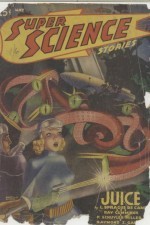
So, if you’re new to the genre – or just looking for a little help – here are some of the best ever clichés assembled in one spot, just for your delight:
The last man on earth finds a mysterious woman to start the race again, and finds that even though his name is Adam, it comes as a complete surprise to him that her name is Eve.
The poor, but virtuous swine/goat/duck herd is swept up in events beyond his ken but is revealed to be the true born king of all England/Middle Earth/the castle – despite his total lack of ken. Extra marks off for secret birth marks, too.
Astronauts land on a mysterious planet where civilisation has been annihilated by nuclear war/pollution/general unkindness and they discover that due to an unexpected Space Time Discontinuity that they’ve actually come full circle and landed on Earth of the far distant future. Take off an extra ten points if the shock realisation comes when they see a half-buried Statue of Liberty.
The Dark Lord sends out his troops to massacre the remaining members of the Royal Family/Resistance movement, but one child is spared/overlooked. This goes for midwives or huntsmen, too, who secretly spirit away the royal babe.
Those wacky aliens are actually Earthlings, and the story is from the point of view of so-sensible extra-terrestrials.
The rightful born king/queen has amnesia and wanders the countryside not knowing who she/he is.
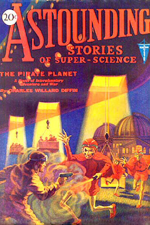
Someone invents a time machine and goes back to kill his/her grandfather/grandmother. In fact, inventing a time machine and going back go kill anyone at all has been done to death, so to speak. Likewise interfering with historical events. In fact, leave Time Travel alone. Too hard.
In a fantastic alternate history, Germany wins WW2.
Kids fall into the computer and become part of a computer game.
Elves and dragons. Enough said.
Slick urban elves with killer hair styles and great designer sense. More than enough said.
Vampires. I mean, is it too late to un-invent vampires?
Earth is refused admittance to the Pan Galactic Federation because of its immaturity in messing up its homeworld.
The techno-science of the patriarchy is responsible for the total ruin of the planet and only the holistic eco-awareness of the worship of the Eternal Earth Mother Goddess saves the species from extinction.
Note: this guide is not exhaustive. Many other clichés exist out there, so beware!
September 16, 2012
Sydney Powerhouse Steam Spectacular
In May this year, as part of the Sydney Writers’ Festival, the Powerhouse Museum invited me to participate in their in their ‘Writer Overnighter’ extravaganza. I’ve written about it here, but here’s a fine photographic pictorial, courtesy of the Powerhouse Museum.
September 12, 2012
Writers Write: My Favourite Book 32
As my childhood memories become foggier and less reliable, there are several book moments that stand out from the murk.
The moment I discovered Herge’s The Red Sea Sharks (a graphic novel in a small rural library!) was like tripping over a gold nugget. The thrall induced by JRR Tolkien’s Lord of the Rings trilogy was such that I would climb high into a tree where I could read without interruption by younger siblings. Ian Fleming’s James Bond series was great fun. And John Wyndham’s novels (such as The Midwich Cuckoos & The Chrysalids) struck a chord that still resounds today.
But the book that shines brightest is Ivan Southall’s To The Wild Sky. This was a proudly Australian story and the first novel to utterly confound me by denying the usual happy-ever-after. The 11-year-old me was so gobsmacked that I wrote to the author seeking answers.
Ivan replied with a beautiful letter putting the onus on my imagination to complete the tale. That was the moment I first understood the magic an author has in their hands.
Many years later I met Ivan and he presented me with the sequel he’d reluctantly written for To The Wild Sky. I read it eagerly, feeling 11 all over again. And I laughed. The conclusion of A City Out of Sight is even more audacious than that of the prequel. I like that a lot.
Tim Pegler’s most recent novel is Five Parts Dead (Text Publishing, 2010). Tim blogs at http://www.timpegler.com.au/blog/ and tweets via @timpegler.
September 9, 2012
I, You, He or She – Some Thoughts on Point of View
In 2003, I wrote the first draft of what was to become Blaze of Glory, the first book in my Laws of Magic series. As I was writing, I was perplexed by how difficult it was. It’s not that I expect writing a 100,000 word novel to be easy but I was having unaccustomed trouble with the characters and the general tone of the prose. When I read the finished draft carefully, I thought long and hard, and then rewrote it from scratch – changing the point of view from first person to third.
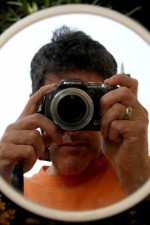
I was only three or four paragraphs into the rewrite when it came alive in a way that my first version hadn’t. The story moved more quickly, I had elbow room, I was able to use irony in a way that I couldn’t with the first person approach – and the main character emerged in a much more rounded way.
Writing is largely a matter of trial and error. This 100,000 word trial – and error – taught me the importance of using the right point of view for the right story. Get it wrong, and everything else is a struggle.
Choosing a point of view to write from is one of the two fundamental decisions that a writer must make when beginning a story. To determine the Point of View (POV), you have to decide who is going to be telling the story – who is the narrator. This will both limit and enable your story to unfold. It will present you with opportunities, burden you with responsibilities and throw obstacles in your path. It will also position your reader to engage with your writing on emotional and intellectual levels.
For a novice, the options can be daunting: first person POV, second person POV, third person (limited or close) POV and third person (omniscient) POV. For all intents and purposes, 90% or more of modern fiction is in either the first person or the third person limited mode.
In short, first person POV is the ‘I’ voice. The narrator is a character and ‘speaks’ directly to the reader. All the experiences of the story come via this character. For example, ‘I wasn’t about to let my feelings get the better of me as I walked toward the school.’
I think of the third person limited POV as ‘the camera on the shoulder’, where the readers are limited to, or close to, one character’s experiences – not just what the character sees, but the whole character experience. ‘Becky wasn’t about to let her feelings get the better of her as she walked toward the school.’
Third person omniscient POV is old-fashioned. It’s a common mode for novels prior to the twentieth century. It’s where a disembodied narrator floats above all the characters, knows everything, shares with the reader and often comments on character’s motivations and aspirations. ‘Little did Becky realise, but soon her feelings would get the better of her while she walked to school – a school that she would learn was going to be demolished the very next day.’
Second person POV is rare, and that’s because it’s extremely difficult to do well. It thrusts the reader front and centre into the narrative: ‘You struggle with your feelings as you walk toward the school.’ I find a story steering me around like that without asking my permission to almost be rude. Second person POV finds its natural home in the ‘Choose Your Own Adventure’ books, where at the bottom of the page the reader must make decisions about the story’s unfolding.
So which is preferable? I write Young Adult novels and my decision making necessarily takes this audience into account. There is much received wisdom about Young Adult readers and their preferred narrative POV. It’s said that young reader prefer novels written in the first person, that the closeness afforded by the First Person mode, where innermost thoughts are on display, makes it easier for the young reader to connect, and that they enjoy the intimacy of, as Atticus Finch would say, walking in another person’s shoes.
This is a widely held belief and, to judge by the number of YA novels told in this mode, a widely practised belief as well.
I have a different outlook on this issue. I suggest that such intimacy with strangers is the last thing that many teenagers want. At this stage of their emotional development, where embarrassment lies at every turn, where social conventions and interactions are a minefield, such enforced closeness can be excruciating. It’s like the awkwardness that comes from strangers who don’t understand the notion of personal space. Without much evidence, I’ll advance the notion that this is felt even more acutely by young males.
There are sound reasons why gaining intimate insight into another person could be good for teens – to help build a sense of empathy, for one – but this isn’t going to work if the reader is squirming at every paragraph, just dying of embarrassment until she or he gives up in a blaze of blushing.
Perhaps I exaggerate, but such discomfort can be the death of reader engagement – and I’m also extremely wary of writing which is ‘good for them’. To my mind, this is a hangover from the Victorian notion of children’s fiction needing to be worthy, needing to teach the little rascals something. This didacticism is still subtly approved of in kids’ lit, to the detriment of reader engagement.
I find the slight distance that the third person limited POV provides is much more palatable for young readers. They’re still close to the main character and are privy to thoughts, feelings and motivations, but it’s as a close observer not as the character – close, but not too close. It’s watching, not becoming. Becoming someone else is confronting when you’re not quite sure who you are, yet.
To my mind, that’s why adults cope much better with first person POV than teens. Adults generally have a better notion of their own identity. Assuming someone else’s identity for the duration of a narrative isn’t as discomfiting. It can even be enlightening or refreshing. When well handled, it can afford the sort of deep immersion into character that is illuminating.
You’ll note (second person!) that I’m concentrating on the reader here in weighing up the pros and cons of various Points of View. Structural issues need to be taken into account as well. It’s difficult, for example, to have a world-spanning disaster novel with a cast of dozens of important characters told in the first person. If ‘The World Shakes Apart’ is written in the first person, how does the main character – plucky vulcanologist Ginger Watts – know what’s going on in the White House, where stress-crazed President Juanita Rose is having a discussion with civil defence authorities that might change the course of history? This is the sort of scenario where you need multiple third person characters, perhaps devoting a chapter to each, to give the sort of widescreen coverage a planetary disaster novel can benefit from.
Of course having said all this, contrary examples abound where a wide-ranging disaster is told from a first person POV (‘The Day of the Triffids’ – John Wyndham, ‘The Furies’ – Keith Roberts, ‘The Death of Grass’ – John Christopher). These concentrate on the trials of the protagonist, and any news of the wider disaster needs to come second hand from hearsay, reports from strangers, or via mass media which can be clumsy when mishandled. A number of novels in this mode were written in Britain in the 1950s and earned the sobriquet the ‘cosy catastrophe’ for the way they were enjoyed from the comfort of living rooms, but also because of the reduced focus that the first person POV brought with the personal issues of survival in the foreground with the wider disaster hinted at.
In my twenty-five novels, I’ve written in both first person and third person modes, doing my best to find the approach that worked best for the story and the readership while understanding the importance of the correct POV. I’ve experimented, gone backward and forward, and even written one book (‘Blackout’) with an alternating first person structure. Two characters had their own first person narratives, told in alternating chapters. This was the only way to capture the breadth of the scenario while retaining the intense character focus I was after.
Recently, I’ve been preparing to write a new novel which I’m reasonably committed to writing as a third person limited narrative. As well as researching, sketching location maps, assembling character back stories and organising time scales, I’ve been writing some short character pieces – in the first person. I’ve found this extremely helpful for fleshing out the characters, well before I actually embark on writing the novel itself. Each first person character piece developed a distinct voice as the characters talked of their lives, their ambitions, their families. These pieces were only a few thousand words each, and much of what appears in them won’t ever make it into the novel, but I’ve found the experience extremely valuable. I’m sure I’ll make this part of every pre-novel warm-up in the future.
As a writer, it pays to think carefully about point of view – and to be prepared to change POV if the story isn’t working.
Oh, the other fundamental decision that a writer must make when beginning a story? Tense, of course!
This article first appeared in on The Australian Literature Review website in September 2010.
September 3, 2012
La Gazette du Bon Ton 2
This is my second batch of illustrations taken from the formidably chic French magazine La Gazette du Bon Ton. These illustrations come from 1914, the year the First World War began, but one wouldn’t know it from the languid, dreamy fashions and lifestyles portrayed here. Willful ignorance? A deliberate turning away from the sordidness of conflict?
Regardless, La Gazette du Bon Ton documents a changing world, one that is leaving behind some of the restrictions of the Edwardian era and stepping into a modern world.

